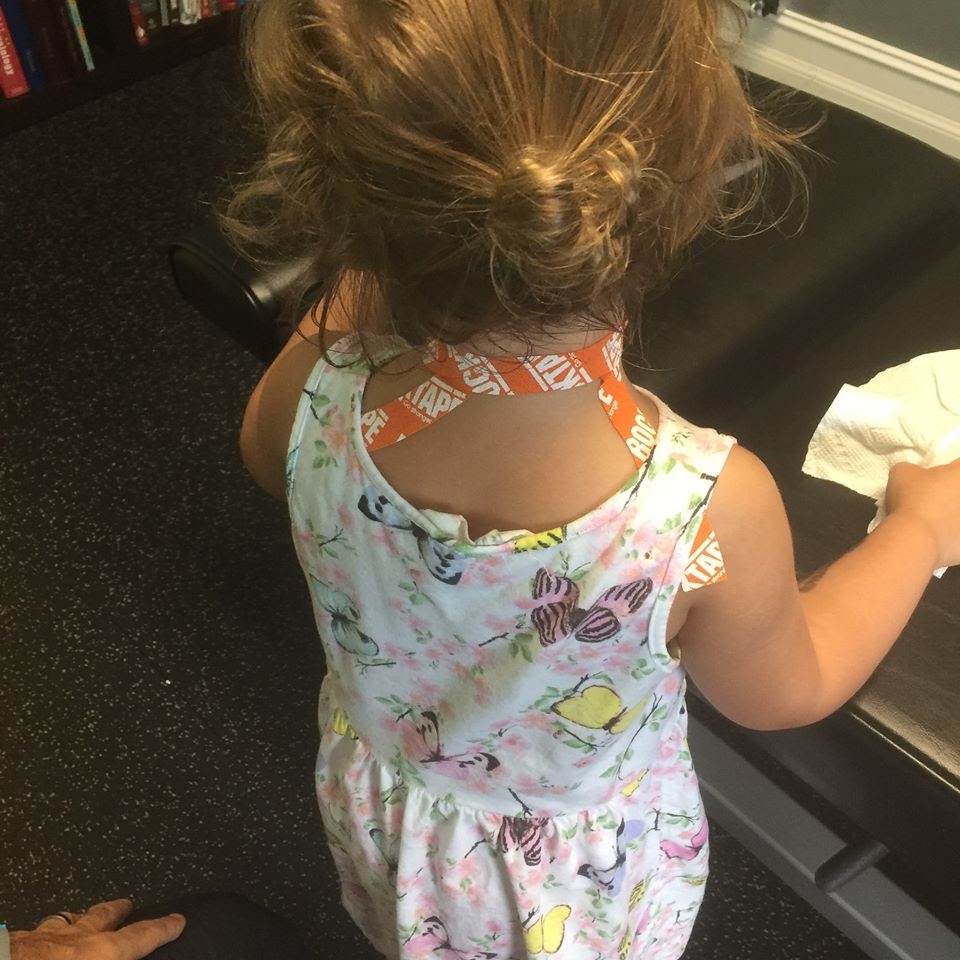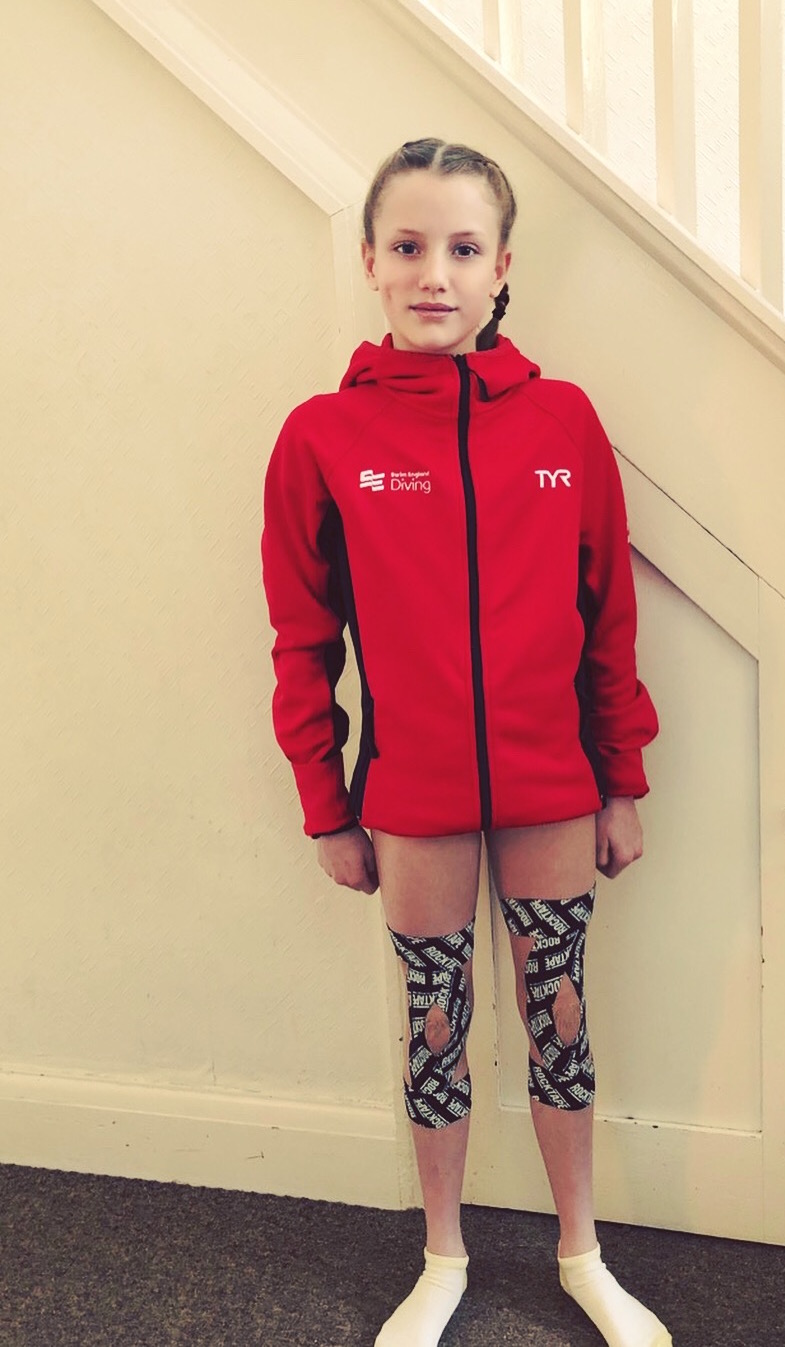Manual therapy is experiencing a paradigm shift. We have long focused our attentions on the mechanical effects of treating soft tissue (skin, fascia, muscles, tendons, ligaments); now, with more evidence pointing to the nervous system and its ability to normalize tissues, mitigate pain* and improve motor control, treating common pediatric conditions became a lot simpler.
If we understand the nervous system and how it responds to stimuli like light touch, deep pressure and vibration then perhaps we can treat our sensitive patients more specifically for their individual needs with less time, less pressure and less potential to injure them. This is important to the outcome of all of our clients, but especially critical when considering the treatment of the pediatric population whose nervous system is developing and whose skin and other soft tissues are more sensitive and delicate.
What approaches to manual therapies are we using for this special population? Our hands are certainly some of the best tools we have, but what else is effective, safe and gentle? Have you ever considered instrument assisted soft tissue mobilization (IASTM) treatment or kinesiology tape, but hesitated because you thought it could be harmful? I can assure you these approaches are not only safe when utilized appropriately, but they are extremely effective as well. Instrument assisted techniques and kinesiology tape are merely extensions of the practitioner using them.
My daughter Polina was born Frank Breech. We utilized inversion techniques, webster’s techniques, and other therapies to avoid a cesarean surgery but still she was delivered cesarean performed by the acclaimed Dr. McLean at North Collier Hospital in Naples, Florida.
She was gorgeous and healthy by all accounts but the breech position caused her develop bilateral hip dysplasia and a severe torticollis. She wore a Pavlik brace for six weeks to proactively treat the hip dysplasia. During this time, I applied manual and IASTM principles to decrease her discomfort, improve length tension relationships and joint centration as well as feed her brain sensory input to improve her motor output. I used kinesiology tape in conjunction with the IASTM for similar reasons. Manual therapies and kinesiology tape can mitigate pain* through mechanical disruption and stimulation of light touch receptors.
A Gentle Approach to Tooling & Taping
A manual therapy tool is only as scary or dangerous as the person wielding it. I could scare a kid with a balloon depending on how I present it. Here are some suggestions when treating kids:
- Reduce the threat and build a therapeutic alliance with the child and caretaker.
- Your words matter; explain what you’re doing. Let them see, hold and even play with the instrument until they are comfortable.
- Demonstrate on an area they can see, again explaining what you are doing, and start very light to desensitize the region and inhibit pain. Light touch is an excellent way to mitigate pain by stimulation of interoceptors that have a inhibitory response to nociception.
- Once you have introduced the tool and decreased pain, then you can progress to deeper pressure or alternative therapies.

Taping Applications for common pediatric conditions: Torticolis
IASTM tools can provide biofeedback that your hands cannot. I have to stress that your hands may be the best tool you have, but for scanning, hands aren’t nearly as effective as tools are. Tools with sharper edges pick up textures in a unique way and provide a significant amount of information about the person you are treating. An IASTM tool with an edge allows for not only comfort but produce an amount of shear as well. Some other considerations that may be a benefit (considering peds) is the cool factor – the novelty of a tool, and the fact that it provides a buffer between the patient and provider. I am not saying we should refrain from touching our clients – on the contrary, when dealing with the mind of a young person or introvert, a tool provides a separation between the patient and the provider, which allows them to relax and accept treatment.
Tools like kinesiology tape require a similar open, non-threatening approach. When taping a baby or child, it’s important that their guardians are aware of the effects and possible reactions associated with treatment. Ask about skin sensitivities or apply a small piece of tape as a test patch. I also recommend smaller applications or smaller pieces of tape which may require some cutting. There are gentle kinesiology tape options with less adhesive for sensitive skin and easier removal. Be sure to inform the parent or guardian on the removal process, or you won’t get a second opportunity to use this effective tool. Remove by applying liberal amounts of oil to the tape to break down the adhesive. Mineral oil, corn oil or other inexpensive oils work well. Milk of magnesia may soothe the skin after removal and can also be applied before taping to create a protective barrier between the skin and the tape for more comfortable removal.
Since I added IASTM and kinesiology tape to my treatment arsenal, certain pediatric conditions became a lot simpler to treat. I’ll touch on three of common pediatric conditions.
Torticollis
Torticollis means twisted neck; it’s one of the most common pediatric conditions for newborns. Torticolis patients are recognizable by their tilted heads or difficulty turning their heads. Positioning in the womb, a difficult childbirth and poor sleeping positions are some of the causes. Most cases are treated through passive stretching and various forms of myofascial release. We can use an instrument to help to downregulate or relax hypertonic neck muscles like the SCM – much like we would with our hands – for different biofeedback. Slow “deeper” pressure will target more ruffini receptors which help stimulate the nervous system to relax and lengthen soft tissues in the region, including the fascial system. This slow and “deeper” pressure associated with ruffini receptors has been shown to have an overall calming effect on the entire organism. At the same time we can identify the more inhibited or lengthened tissues and apply a faster more oscillatory stimulus to target pacinian receptors to help create more control and awareness. The target mechanoreceptors are fast adapting and can be stimulated in as little as ten seconds – which is beneficial when dealing with a potentially squirmy crying infant. The treatments care shorter, gentler, and effective when we know how specific receptors respond to stimuli. Applying a 2” piece of gentle kinesiology tape over SCMs, levator scapula, traps or spinal erectors may help to increase sensory input to further normalize the tissue and gain control of the region.

Toe Walking
Walking on the toes or the ball of the foot, also known as toe walking, is fairly common in children who are just beginning to walk and may be outgrown. It may persist in children with cerebral palsy, muscular dystrophy, autism or other pediatric conditions involving generalized disease of nerve and muscle. Current clinical trials indicate kinesiology taping may positively affect toe-walkers. Addressing the length-tension relationship of anterior and posterior tissues may assist the practitioner in treating this movement pattern. Here it may help to use kinesiology tape as both a postural support for kinesthetic cueing and as a neurosensory input. Place the foot in neutral and apply kinesiology tape to the anterior chain (anterior tibialis), then completely dorsiflex the foot and apply a second strip to the posterior chain (foot, achilles tendon, gastroc, soleus, posterior tibialis). This will create a slight tug or kinesthetic cue if the foot moves into plantar flexion (toe walking) and additional sensory input to the opposing musculature to control the movement. The best thing about kinesiology tape is that it’s a one-time application that continues to provide benefits 24/7; these benefits could even influence long-term mechanical changes over time. For best results, utilize the same approach of downregulation of the posterior chain and upregulation of the anterior chain before taping.
Osgood-Schlatter

Taping for common pediatric conditions: Osgood-Schlatter
Osgood-Schlatter can cause a painful, bony bump on the shin bone just below the knee. It usually occurs in children and adolescents experiencing growth spurts during puberty or children who participate in sports. Quadriceps can be excessively tight which then pulls on the patellar tendon. This can be be painful and frustrating to a young person who wants to compete or just participate in an activity with friends. Some parents may not want to utilize painkillers, injections or other means of pain control that may have adverse effects. This is a population that would benefit greatly by kinesiology tape and IASTM effects. First, you may want to start with a very light brushing over the painful zones to decrease discomfort. Light touch and stimulation of interoceptors can help to mitigate pain and reduce the threat associated painful movements. Now you are ready to progress into addressing tension of the rectus femoris and quadriceps by downregulation (slow deep ruffini). Lastly upregulate balancing tissues like the posterior chain (hamstrings). A final layer may be the application of kinesiology tape directly over the tibial tuberosity, patellar tendon, and rectus femoris – going as far as the ASIS or even following the psoas – depending on your familiarity of fascial chains that control hip flexion. Now we have a happy young person in less pain,* moving better.
Thanks to modern advancements, musculoskeletal conditions are becoming easier to treat than ever. Though real mechanical injuries and limitations exist, all conditions have a neurosensory component. We will have improved outcomes when we assess and treat for both mechanical and sensory effects and when we use a multitude of approaches to layer our care.
Want to learn more about kinesiology taping?
FMT Basic and Advanced Taping introduces functional kinesiology taping methods based on the practical framework, “taping movement, not muscles,” improving movement patterns and performance of patients/clients & keeping bodies going stronger, longer.
Pediatric Kinesiology Taping
Can you join? Do you help people move? Then yes! FMT courses are intended for healthcare professionals, therapists, coaches and trainers – and CEUs may be offered for DC, ATC, PT, OT, LMT and personal trainers.
Browse Kinesiology Taping Courses Now!
Want to learn more about IASTM?
FMT Blades introduces the concept of movement therapy and performance enhancement via IASTM. This course is intended for bodyworkers & health professionals with all levels of experience with soft tissue techniques. Get even more in-depth with FMT Blades Advanced, which introduces the concept of skin/fascial/nerve gliding and neuro-sensory pain* modulation via IASTM.
Can you join? Do you help people move? Then yes! FMT courses are intended for healthcare professionals, therapists, coaches and trainers – and CEUs may be offered for DC, ATC, PT, OT, LMT and personal trainers.
*Not clinically proven for all injuries.
